New technologies for chemical weapons protection
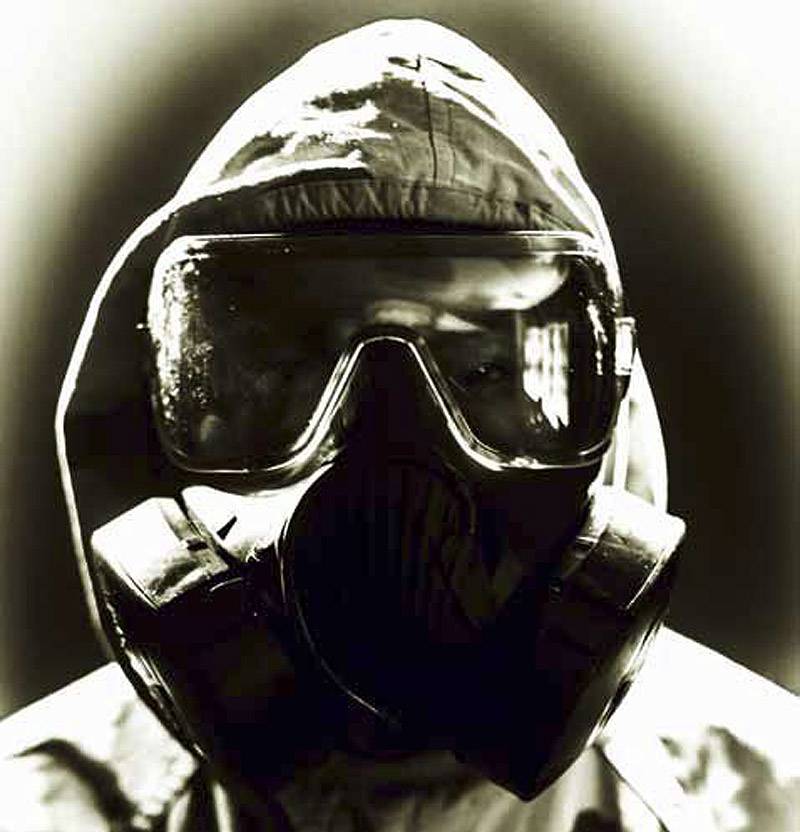
Risk of being attacked weapons mass destruction (chemical, biological, radiological or nuclear) is of concern to commanders conducting any modern military operations. This situation can be encountered even in the case of the prohibition of such weapons by international treaties, when their use may seem unlikely.
This concern has serious grounds, because if the troops are not trained and equipped properly, this can lead to large losses and seriously disrupt the operation. Of all types of weapons of mass destruction (WMD), chemical weapons (CW) have recently gained notoriety due to their open use in several conflicts, including the conflict in Syria. In the Iran-Iraq war from 1980 to 1988, Iraq also used chemical weapons, which became a flagrant crime against humanity, since the attacked Iranians were not ready for this and were not equipped with special chemical protection. In general, attacks using chemical weapons, as a rule, are not tactical in nature, their goal is to spread fear and horror in the ranks of the enemy. However, if we analyze history the use of chemical weapons, it can be concluded that it rarely had decisive military significance, especially when used against trained modern troops.
Even taking into account the not so decisive impact of chemical weapons, the adoption of measures necessary to prepare for protection against chemical warfare agents or biological warfare agents negatively affects the ability of soldiers to fulfill their duties. In the event of an XO attack, each soldier must immediately respond by putting on the necessary protective equipment to protect him from his effects. And for this he is given a matter of seconds. This means that he must constantly carry a gas mask and a special suit of chemical protection. This suit is specially designed for protection against toxic substances and is often worn over conventional military equipment. It can be bulky, uncomfortable and cause profuse sweating. Many of these protective suits are airtight, do not breathe, preventing the heat generated by the owner of the suit from leaving even at moderate temperatures, which can lead to overheating of the body. In conditions of high ambient temperatures, its probability increases even without physical exertion. High physical activity of soldiers in battle can cause heat stroke, as well as dehydration and other serious problems. Even the simplest task in such a suit becomes difficult, and endurance quickly falls. A report by the Institute of Defense Analytics, prepared for the US Department of Defense, “The impact of wearing a protective kit on a person’s performance,” states that “even without thermal exposure, the ability of combat and support units to perform tasks is significantly reduced. This was demonstrated in military exercises, during which the alleged losses more than doubled.
Poisoning substances are divided into four major physiological classes; for OM of each class having different properties, its own set of measures for protection is required. Nerve agents act quickly on the nervous system, but also quickly decompose. Sorbent skin agents destroy cell tissue upon contact and can retain their properties for a long time. OA of asphyxiating effect upon inhalation burns the bronchi and lungs. General toxic agents interfere with the ability of the blood to carry oxygen. They act quickly, but also quickly dissipate. Poisoning agents can be gaseous, liquid or powdery, the last two forms can be very persistent.
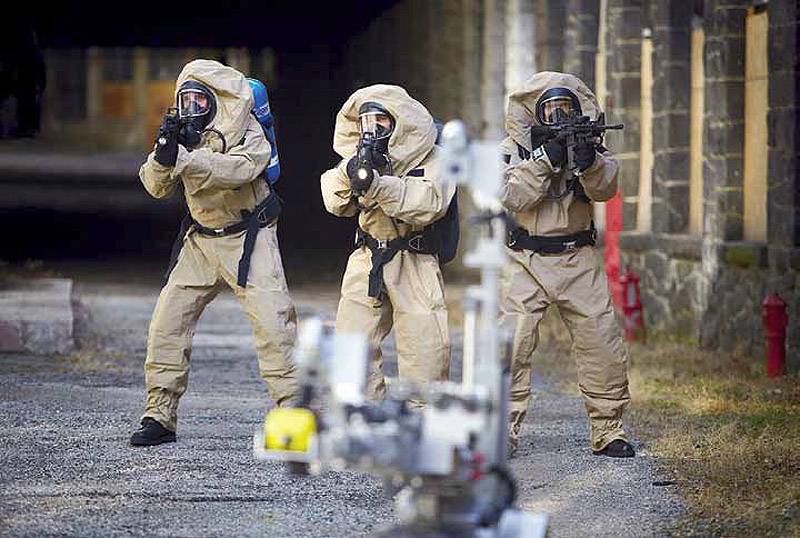
Stress free
For many years, individual chemical protection of personnel was ensured by wearing outer protective clothing made of impermeable materials and a gas mask or respirator. In the gas mask, special filters were used to absorb chemicals, while the upper protective clothing resembled a raincoat or a raincoat that protects the skin from contact with OM. This type of clothing is also popular at present, including in the West, where it belongs to Level A protective sets. For example, Dupont's Tychem HazMat suit is widely used by both military and civilian emergency response services. These kits are completely airtight and therefore most often worn for limited periods of time due to the possibility of overheating and fatigue of the owner. Lightweight impervious jackets, trousers and boot covers or just hooded capes are also used to provide protection for a short time, for example, when crossing an infected area. They are mainly disposable and are sewn from materials such as Tyvek from Dupont, or materials based on polyvinyl chloride.
The US military at one time standardized a graphite-lined protective kit that was used in the first Gulf War. Although it was more suitable for soldiers than earlier models, it was nevertheless cumbersome, did not breathe, had reduced characteristics when wet, and graphite dyed clothes and exposed parts of the wearer's body black. After Operation Desert Storm, this set received a lot of negative reviews, in connection with which it became clear that the American military needed alternative solutions that could have improved characteristics from a physiological point of view. However, the coalition forces of some countries already had the experience of wearing similar protective kits in desert areas in which the above problems were successfully solved. For example, the French wore a suit made by Paul Boye, which did not have an additional physiological effect, although it also had a graphite lining, but at the same time it looked like ordinary military equipment.
Another filtration technology is based on graphite balls glued to the lining of the protective suit. This technology, proposed by the German company Bliicher as Saratoga, is used in the JSLIST (Joint Service Lightweight Integrated Suit Technology) combined-arms light kit, adopted for the supply of the US military. In turn, the British company Haven Technologies has teamed up with OPEC CBRN to offer Kestrel and Phoenix kits.
An OPEC spokesman said Kestrel “is a mid-weight suit, 30 percent lighter and ideal for hot climates.” Kestrel was selected in 2016 for the Australian Armed Forces.
Research and development
In the United States, several research and development programs are being implemented, the purpose of which is to create individual defense systems against airborne substances, which have a lower physiological burden on the soldier. One of the approaches is to give resistance to general warfare equipment to standard combat equipment, as a result of which there is no need for special suits that must be constantly carried with you and regularly worn. The exclusion of an additional layer of clothing also helps to reduce heat load and increase wearing comfort.
WL Gore has developed impermeable and selectively permeable protective fabrics, including Chempak. A company spokeswoman explained that “this is a very light outerwear for short-term use. Selectively permeable protective tissues reduce perspiration, letting heat out, but at the same time prevent the penetration of OM. This contributes to some reduction in the body temperature of the costume owner. ” Often, underwear is sewn from Chempak fabric, on top of which ordinary combat equipment is worn. This underwear can be worn longer, it is less bulky and as a result more convenient.
As a possible solution, nanotechnology is also being studied, which will make it possible to obtain lighter and more breathable textile products for protection against OM. Fabrics coated with nanofibers have good prospects, since after impregnation with absorbent material they remain impermeable to liquid and aerosol substances and at the same time provide heat removal and do not interfere with the perspiration process. It is also believed that this protective uniform will be more durable and provide the owner with better comfort.
It should be recognized that a lot of attention is rightly paid to the development of suits with the best characteristics of protection against OM. However, numerous field and laboratory studies confirm that the greatest burden for a soldier is wearing a gas mask. This is especially true in case of high physical exertion. In this regard, different levels of personal protection were determined, often bearing the abbreviation MOPP (Mission Oriented Protective Postures - the procedure for using personal protective equipment, depending on the nature of the task). They range from the MORP 0 level, when only normal combat equipment and uniforms are worn, and to the MORP 4 level, which requires the wearing of a full protective kit, from shoes and gloves to the hood and gas mask. Other MOPP levels determine fewer kit items, but they must be taken with you and prepared for immediate use. In general, the decision on the level of MORR is taken by the command based on the assessment of the perceived threat of using OM.
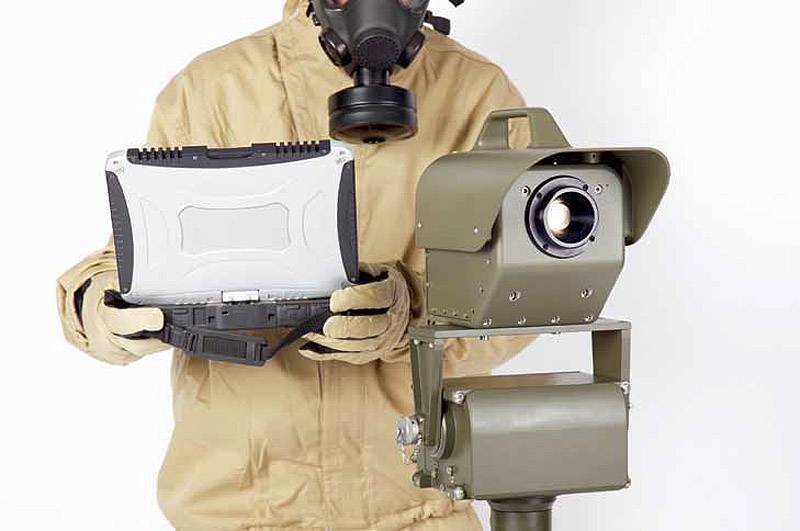
Poisoning Detection
Complicating the decision to use a lower level of MORP (latent desire of commanders) is the fact that the presence of OM may not be obvious to the human senses, at least before it begins to exert its negative influence on those who have been infected. Some OMs are also intentionally created persistent, maintaining their effectiveness for a long time. As a result, units can easily enter the infected area without realizing it. Therefore, continuous monitoring for the presence of OM and their rapid detection is very important. These systems should be simple, reliable and accurate, since false alarms may require the use of protective kits, which will reduce the effectiveness of personnel. Stationary and portable detectors are needed, because both advanced units and those located in the rear can become potential targets of WMD. Indeed, the use of airborne weapons against command posts, artillery batteries, supply bases and airfields is considered very effective in terms of disorganizing the enemy’s actions, since these objects are easily detected and very vulnerable.
The simplest technology for detecting OM is indicator paper. It ranges from basic strips, for example, soldier-owned strips M8 and M9, to the kit M18AZ used by tactical chemical reconnaissance units. A process called visual colorimetry is based on a reaction that occurs when an organic substance comes in contact with a substance on paper. A specific visual color change occurs depending on the presence of a particular OM. Strips for determining OM are inexpensive, simple and especially effective when working with liquids and aerosols. However, they are sensitive to high humidity.
For a more accurate definition, manual systems are used. The Proengin French-made hand-held stationary and mobile detectors of the AP4 series use flame spectrometry technology to detect and identify chemical warfare agents. A company spokesman said that “they work perfectly in the field, despite rain or high humidity, even in the presence of extraneous chemicals. "They make it possible to detect nerve agents, skin-boilers and vomiting substances, as well as many toxic industrial chemicals." Smiths Detection offers its HGVI device, which can operate several sensors simultaneously using different technologies: an ion mobility detector, a photoionization camera and a tomographic gamma camera. A compact unit weighing 3,4 kg determines not only OM and toxic industrial substances, but also gamma radiation.
Airsense Analytics has developed a system that offers "enhanced" detection of chemicals as well as toxic industrial substances and other hazardous compounds. Its GDA-P device allows reconnaissance teams to determine not only OM but also other hazardous substances with high efficiency. These capabilities are becoming increasingly important at a time when paramilitary and non-military structures, without access to chemical weapons, can use alternative solutions. It is worth mentioning another system designed to detect OM and toxic industrial substances. This is Owlstone's Next Generation Chemical Detector, designed for the U.S. Army. With a weight of less than a kilogram, it reports the detection of OM within 10 seconds; available in manual version and in the installation option on the machine. The device can be programmed to expand the range of defined substances.
Size and weight are some of the most important characteristics of personal OB detectors, since they directly affect the combat effectiveness of a soldier. The BAE Systems' Joint Chemical Agent Detector (JCAD) handheld detector can store, report use cases, and store all of this in its memory for later detailed analysis. The JCAD detector uses surface acoustic wave technology, which allows the determination of various organic substances simultaneously.
One of the preferred behaviors after an OM attack is to avoid infected zones by quickly identifying them. The key to this is real-time remote detection. The Joint Chemical Stand-off Detector (JCSD) uses UV laser technology and is mounted on a tripod or in a vehicle. Up to 20 toxic agents and 30 toxic industrial substances are positively identified in less than two minutes. Another long-range OM detector called MCAD (Mobile Chemical Agent Detector) was developed by Northrop Grumman. The company said that this system is completely passive and capable of detecting hazardous substances at a distance of 5 km using a library of recognition algorithms. In order to replenish this library, additional substances can be programmed. The device can be controlled wirelessly and connected to a communication network. MCAD has been shown to be highly effective both on land and in marine environments.
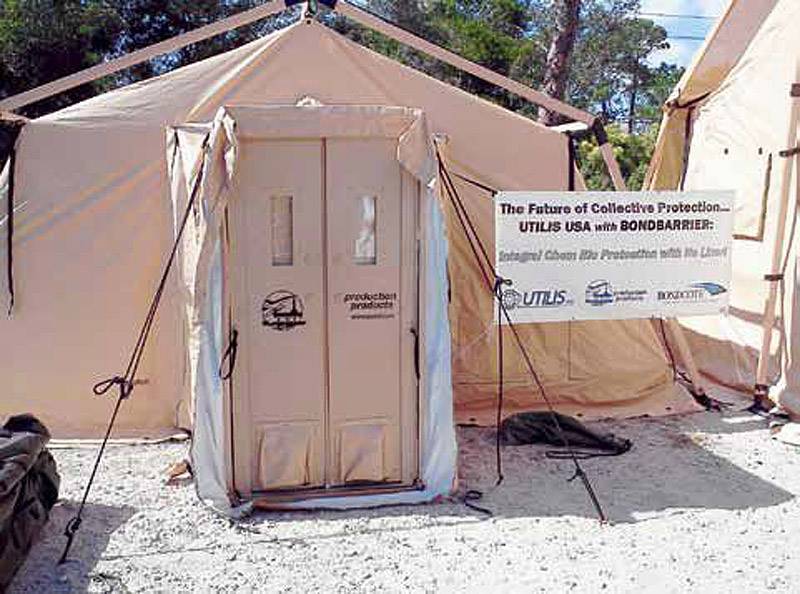
Compact Atmospheric Sounding Interference (CATSI) is another remote sensing system developed by Defense Research and Development Canada and deployed in the Canadian Army. Using the built-in Fourier spectrometer, the device is able to automatically detect and identify chemicals at distances up to 5 km. Bruker Daltonik's RAPIDPIus device, mounted on a tripod, ship, or vehicle, uses circular scanning with passive infrared sensors and Fourier transform spectroscopy to detect OM and industrial chemicals.
The Bertin Instruments Second Sight MS Gas Detector is a tripod-mounted device that uses an uncooled, multi-spectral infrared camera that can detect hazardous substances, including mixed clouds, over 5 km. The device scans at 360 degrees every three minutes with a selectable field of view of 12, 30 or 60 degrees. The instrument provides a positive determination of the test substances in less than 10 seconds.
The attention paid today to early remote detection reflects the growing tendency that the best response to the use of OM is the fastest and most accurate identification and localization of the infection zone. This eliminates the need for protective measures that reduce combat effectiveness, which may be acceptable for mobile forces, but is not at all suitable for those units and those activities that require stationary deployment. Even the most basic reaction in the form of shelter in tents and shelters in the event of a warning issued early enough can also limit the degree of exposure to organic matter. As a result, several companies engaged in the production of soft shelters from woven materials that are not only resistant to OM, but can also be used as disinfection points. The British company Warwick Mills uses a proprietary fabric soaked in chemical and biological impregnation. They also develop a self-deactivating multilayer material that reliably destroys chemicals. UTS Systems offers tent shelters that are not only resistant to airborne substances, but also equipped with air locks and filtering systems for chemical warfare agents.
The effectiveness of military targets using OM is measured more by shock and confusion reigning in the ranks of the attacked than by casualties. The need to wear protective kits and exhibit additional security when performing even the most routine tasks leads to a sharp decrease in efficiency: the rate of artillery can be reduced, sorties aviation can last longer, are complicated, if at all possible, by the operation and maintenance of equipment, and human and material resources are redirected to decontamination works.
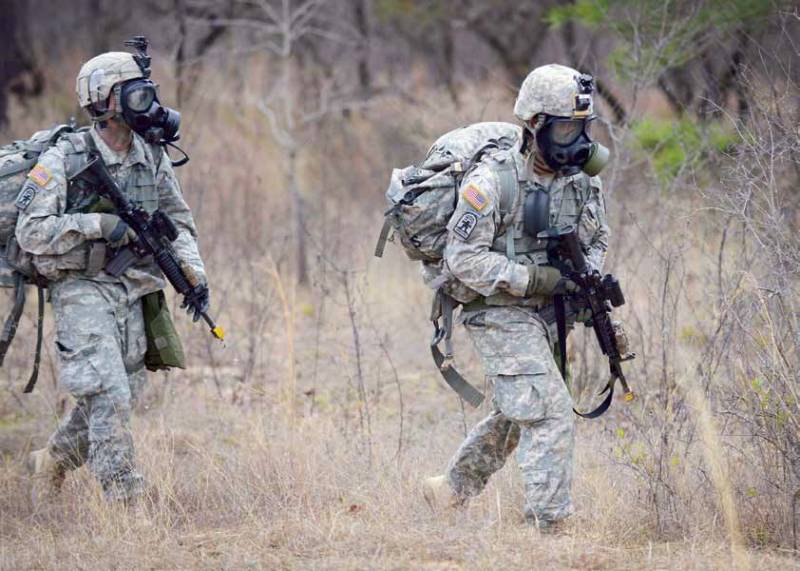
Information